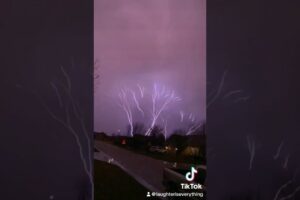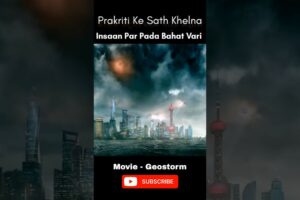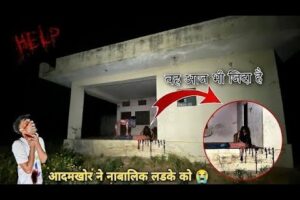
From towering skyscrapers covered in trees to zero carbon smart cities, there are so many ways to imagine what a sustainable city of the future might look like. But what does it really mean to be sustainable anyway? Today, we’re going to look at environmental planning and how it intersects with people and the communities they form.
Further Reading:
Corkscrew Samp Sanctuary – https://corkscrew.audubon.org
AJLC at Oberlin – https://www.oberlin.edu/ajlc
La Borda Co-Op – http://www.laborda.coop/en/
Sources: https://docs.google.com/document/d/1YQOomMFWqS1JdbnxYpY9VQgoq4r7Gue7x-rdskSshyE/edit?usp=sharing
#CrashCourse #Geography #UrbanPlanning
Watch our videos and review your learning with the Crash Course App!
Download here for Apple Devices: https://apple.co/3d4eyZo
Download here for Android Devices: https://bit.ly/2SrDulJ
Crash Course is on Patreon! You can support us directly by signing up at http://www.patreon.com/crashcourse
Thanks to the following patrons for their generous monthly contributions that help keep Crash Course free for everyone forever:
Dave Freeman, Hasan Jamal, DL Singfield, Lisa Owen, Jeremy Mysliwiec, Amelia Ryczek, Ken Davidian, Stephen Akuffo, Toni Miles, Erin Switzer, Steve Segreto, Michael M. Varughese, Kyle & Katherine Callahan, Laurel Stevens, Vincent, Michael Wang, Stacey Gillespie (Stacey J), Alexis B, Burt Humburg, Aziz Y, Shanta, DAVID MORTON HUDSON, Perry Joyce, Scott Harrison, Mark & Susan Billian, Junrong Eric Zhu, Rachel Creager, Breanna Bosso, Matt Curls, Tim Kwist, Jonathan Zbikowski, Jennifer Killen, Sarah & Nathan Catchings, team dorsey, Trevin Beattie, Divonne Holmes à Court, Eric Koslow, Jennifer, Dineen, Indika Siriwardena, Khaled El Shalakany, Jason Rostoker, Shawn Arnold, Siobhán, Ken Penttinen, Nathan Taylor, Les Aker, ClareG, Rizwan Kassim, Alex Hackman, Jirat, Katie Dean, Avi Yashchin, NileMatotle, Wai Jack Sin, Ian Dundore, Justin, Mark, Caleb Weeks
__
Want to find Crash Course elsewhere on the internet?
Facebook – http://www.facebook.com/YouTubeCrashCourse
Twitter – http://www.twitter.com/TheCrashCourse
Tumblr – http://thecrashcourse.tumblr.com
Support Crash Course on Patreon: http://patreon.com/crashcourse
CC Kids: http://www.youtube.com/crashcoursekids
source







"As a society we often just accept that there will be some people who have to live with the economic or environmental consequences of the types of development decisions we make, and that can be heavily placed on vulnerable groups."
Very true, and there's no reason to believe that won't continue. This reality has been somewhat masked by the extreme economic growth we have experienced over the last half century or so, but that level of growth simply cannot be sustained indefinitely.
Between 1990 and 2020, global GDP increased 273%. Between 2020 and 2050 global GDP is projected to increase by 130%. Economic growth is slowing down, but the global population continues to increase. By 2050, the global population is projected to be just under 10 billion people. Inequality will increase as everyone tries to acquire a larger and larger slice of a more slowly growing pie.
personally i want to live in an earth ship community, but would love to visit some sustainable cities
this video makes me so happy because it says everything im already thinking about, and gives me hope about being able to do this as a career in the future. i’ve always thought about reusing old places and just updating them, but i never knew the term “retrofitting”
Thank u so much , your presentation is helping…
I loved this video, and I want to do this as a career, solving these problems and building more sustainable cities. What would you recommend as a major that could lead me on this kind of career path?
This episode is awesome! and exactly what I want to do with my future career 🙂
This felt like a whirlwind overview of the many, many considerations that go into sustainable living. A deeper dive into these facets would warrent many more episodes. There’s a series I’ve been watching on Curiosity Stream called “Dream the Future” which also goes into some of these topics in more detail; I think one of them covers some of the utopianlike cities you mentioned in the beginning of this video.
Good luck with the PhD thesis Alizé!
Sad to hear next time will be the last episode. Really enjoyed this series
Why do we have to make everything in rectangles
I feel like leaders procrastinated to the point of our destruction. We need people to act
Tying badly designed outdated urban areas and historical slums into the Green Agenda as a solution to " Climate Change" is galling . Common sense and innovative thinking is all that is needed . Something the N.W.O. or the Green " sustainability " Agenda DOES NOT HAVE A MONOPPOLY ON .
TL;DW: Don't build for cars, and promote dense mixed-use areas.
I love this series so much. The host is also the best.
Sustainable building materials, energy, public transit and policy all need to be implemented.
Hi how's it going watching from Broomfield Colorado
One more episode to go???!! This is so sad, this has been my favorite CC series 🙁
I never want this series to end.
Excellent work, wow!! I’m sure y’all have sent these videos out to professors/teachers/other educators or have someone responsible for doing that. Have y’all thought about a supplemental video to some of these video topics that would explain what kinds of jobs there are in the field and what you might do to prepare for, enter, and succeed in that field? Students in secondary and higher ed would benefit so much from your research and presentation!! 🙂
oh god no, trees on buildings suckkkkk. Civil engineers hate it so much. If you want greenery just stop urban sprawl and stop building shitty suburbs!
I am a Broom 🧹… but in a casual way!
I love how Alize’s voice changes while pronuncing French names 🙂 Salut!
Can we extend two more episodes (to make it exactly 1 year long)
I agree with most of the points discussed, but at 5:10, saying that urban areas create more pollution is outright duplicitous. It had been found, repeatedly, that Americans living in urban cores pollute far less per capita than Americans living in suburbs/exurbs.
for the algorithm
Beyond solarpunk, just building more mass transit, high density housing, and encouraging non-car transportation makes cities waaaaaaay more sustainable than any future tech dream. Suburbs produce FAR more carbon per person than cities.
Singapore, Singapore 😄
My question is how can we improve the quality of life in low income area without pricing them out?
We really need to put our heads together man!
Final? 😭😭😭😭😭
I’ve always disliked cities but during my GEOG undergrad I kind of fell in love with sustainable city geography because it was about trying to address everything that made me hate cities. It made me realize that they don’t have to be this way
Cool topic. Wonder if the creators can recommend some reading material on it? That’s be cool.
Very interesting from my public health background to describe cities as having lack of access to healthcare when even the worst off neighborhood has greater access than most of the rest of the country, in particular the rural areas.
my land lords keep cutting down my insulating foliage and not replacing it!
give people control over their own homes!
No more evictions from primary residences!!
ROWLET 😍
let people and the planet rest without fear
no more evictions from primary residences!
this is exactly what i want to do with my career 🙂
I love this! Please do more videos related to sustainability, this was amazing!
Where is this farming and housing co-ops. I want to do that. Does Chicago have any sustainable farms, housing co-ops and or green cities?
I realize that I despise urban areas because of traffic and noise caused by car dependency, not by population density.
Awesome.